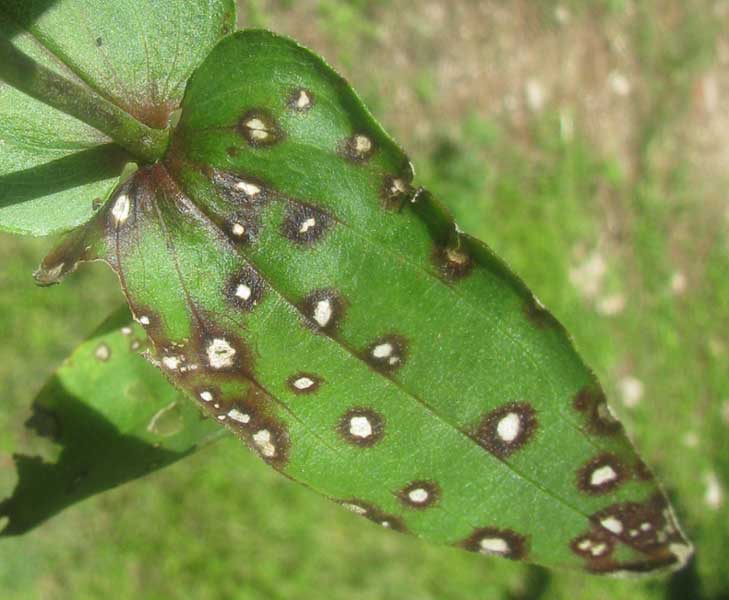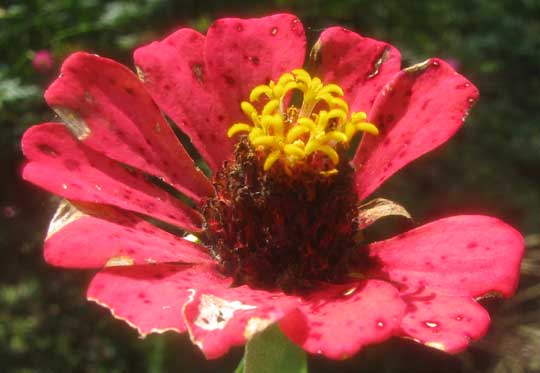Excerpts from Jim Conrad's
Naturalist Newsletter

from the November 6, 2011 Newsletter issued from Hacienda Chichen Resort beside Chichén Itzá Ruins; limestone bedrock; elevation ~39m (~128ft), N20.675°, W88.569°; central Yucatán state, MÉXICO
ALTERNARIA LEAF SPOT ON MY ZINNIAS
Only one of my zinnia plants survived the rainy summer and competition with ten-ft-tall cotton and other rampaging neighbors, but that plant is loaded with flowers and attracting many butterflies. However, it's pretty diseased.
I read that only two diseases are commonly troublesome for zinnias: a powdery mildew, and Alternaria Leaf Spot. Both diseases are especially common during hot, rainy summers such as we've had here. Last summer my zinnias stayed stunted and died early because their leaves became dusty with talcum-powder-like powdery mildew. My single surviving zinnia shows no sign of powdery mildew, but its leaves are spotted as shown above. The infections affect the flowers, too, as seen below:

Those spots are infections of the second zinnia disease, Alternaria Leaf Spot, also called Alternaria Blight, caused by the fungus ALTERNARIA ZINNIAE.
Alternaria is a genus of ascomycete fungi -- what in the old days were called "sac fungi" because they produce spores, called ascospores, in special pods or sac-like structures known as asci (singular ascus). I've prepared a drawing of an ascomycete fruiting body at ../f/fungsac.gif. The best-known ascomycete fungi are mildews, molds and the highly edible mushrooms known as morels.
That genus Alternaria is a very big and important one containing about 300 species. It's estimated that 20% of all agricultural spoilage is caused by Alternaria species, plus many species are important for natural decay and decomposition. Many other Alternaria species cause plant diseases, such as our Alternaria Blight on zinnias, as well as animal diseases on skin, mucous membranes, eyeballs and the digestive tract. The terms alternariosis and alternariatoxicosis are used for disorders in humans and animals caused by fungi in this genus. The air, water and soil are so full of Alternaria spores that you just can't get away from them. If you're into ecology, pathology or just about anything dealing with natural science, you need to know about and respect the Alternaria fungi.
Alternaria zinniae -- whose species name zinniae indicates its preferred host -- is passed from one generation of zinnia to the next by spores on the seeds and in contaminated debris in the soil.